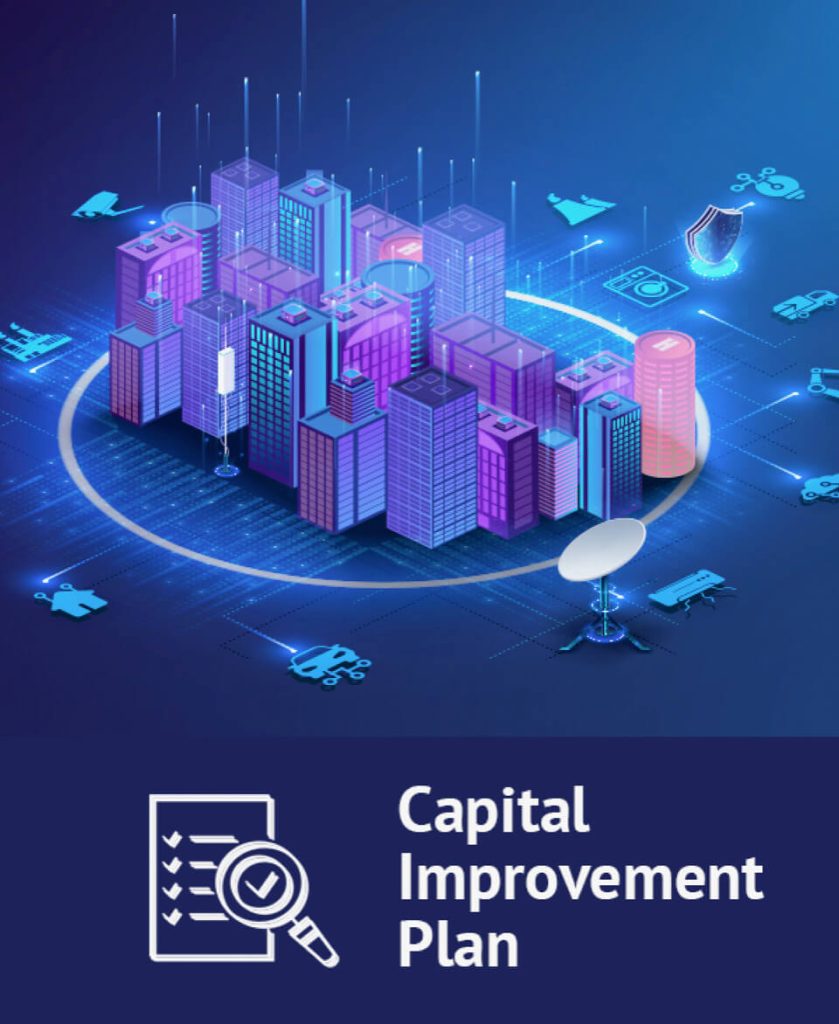The City of Baltimore, Maryland, faces several significant infrastructure challenges that impact the daily lives of its residents. One of the most pressing issues is the need to modernize and expand the city’s transportation system, including roads, highways, and public transit, to reduce traffic congestion and improve safety. Baltimore’s aging water and sewer systems require significant investment and upgrades to maintain reliable service and avoid potential health hazards. The city also needs to invest in affordable housing developments and improve access to high-speed internet to support economic growth and improve the quality of life for its residents. Addressing these challenges will require collaboration and investment from local and state officials and private sector stakeholders.
City of Baltimore, Maryland
Population (Year): 576498 (2021)

Sample Highlights from the Capital Improvement Plan
Project ID
Project Title
Project Start Year
Project Description
Project Spend Total
Page Ref
Project Satus
333102
Jones Falls Phase II Sewershed Improvements for 5 year LOP
2026
The purpose of the comprehensive rehabilitation of the sanitary sewer meter basins is to remove rainfall dependent. Inflow/Infiltration (I/I).
4917000
152
Not Started
332935
Drainage Repairs and Improvements at various Locations FY2024
2024
The stormdrain network is very old and has shown signs of failure.This project will rehabilitate, replace and repair as necessary to improve the City’s storm drain system and ensure that the system meets City standards.
5865000
115
Not Started
332446
Engine 31 HVAC Installation
2023
The station currently relies on window units for its summer cooling needs. Installation of permanent HVAC/cooling would greatly increase the comfort of the FD members while on shift.
70000
22
Not Started
332780
Martin Luther King, Jr. Boulevard Sidepath
2023
Design and construct 1.45-mile sidepath on the west side of sidewalk, per the Separated Bike Lane Network plan.
868000
92
Not Started
332933
SDC-7774 Baltimore Harbor Drainage
2023
Due to complaints of flooding in the Harbor Watershed area, DPW will conduct a study for the design and construction of the storm drain system to determine the storm drain flow capacity, possible damage to the system and causes of sump area.
7453000
114
Not Started
Explore all options available to you!
Citylitics offers access to over 30,000 unique locations across North America through our Capital Projects Dashboard (CPD).
Capital Projects Dashboard (CPD) provides a comprehensive market view of all planned infrastructure spend in one single view with powerful filters such as: population, project value, fiscal year, project status, project description, geography, and more. The dashboard will help identify opportunity hot spots, create data-driven forecasts you can be confident in with bottom-up data for the next 5 years of planned infrastructure spend, and uncover true market needs.
How to Read a Capital Improvement Plan (CIP) for Business Development?
When a city, municipality or state issues a Capital Improvement Plan (CIP), it can be overwhelming and daunting, but there are a few key things you need to investigate. Let’s start with the definition of CIP – A Capital Improvement Plan (CIP) contains all the individual capital projects, equipment purchases, and major studies for a local government; in conjunction with construction and completion schedules, and in consort with financing plans. The plan provides a working blueprint for sustaining and improving the community’s infrastructures. It coordinates strategic planning, financial capacity, and physical development. A CIP stands at the epicenter of a government’s Planning, Public Works, and Finance departments. When a CIP is issued, it typically includes the following information:
- A listing of the capital projects or equipment to be purchased
- The projects ranked in order of preference
- The plan for financing the projects
- A timetable for the construction or completion of the project
- Justification for the project
- Explanation of expenses for the project
Now, for business development, while the capital plan is interesting, the capital program is for capital expenditures that extends five to ten years beyond the capital budget. Knowing the difference is important so you can influence upcoming program versus just responding to an RFP. If reading the CIP makes your head explode, or you want to save time, Request a Demo of Citylitics CIP dashboard with over 20,000 CIPs from USA and Canada. Citylitics has 20,000 plus available CIPs, how can we help you? What states, cities or counties are you looking to improvement your business development, we can assist you in influencing an upcoming RFP versus simply responding to an RFP. Citylitics Capital Projects Dataset is a comprehensive resource for businesses and organizations looking to track and analyze planned infrastructure spend in their area. The dataset offers a range of features and benefits, including:
- Comprehensive Market View: The dataset provides a single view of all planned infrastructure spend, with powerful filters such as population, project value, fiscal year, project status, project description, geography, and more. This allows businesses to gain a comprehensive understanding of the market and identify new opportunities.
- Identify Opportunity Hot Spots: The dataset offers map views and filters that allow users to identify opportunity hot spots where they need to allocate resources. This helps businesses to understand where they should focus their efforts to achieve the best results.
- Create Data-Driven Forecasts: The dataset provides bottom-up data for the next 5 years of planned infrastructure spend, allowing businesses to create data-driven forecasts they can be confident in.
- Uncover True Market Needs: The dataset allows businesses to develop long-term business plans, R&D, and growth initiatives based on true, bottom-up market needs instead of opinions and anecdotes. This helps businesses to make more informed decisions and achieve better results.
With Citylitics Capital Projects Dataset, businesses can gain a deeper understanding of planned infrastructure spend in their area, which can help them to identify new opportunities and make more informed decisions.
